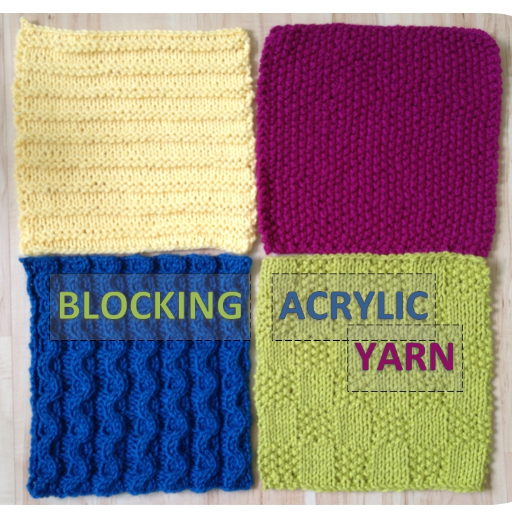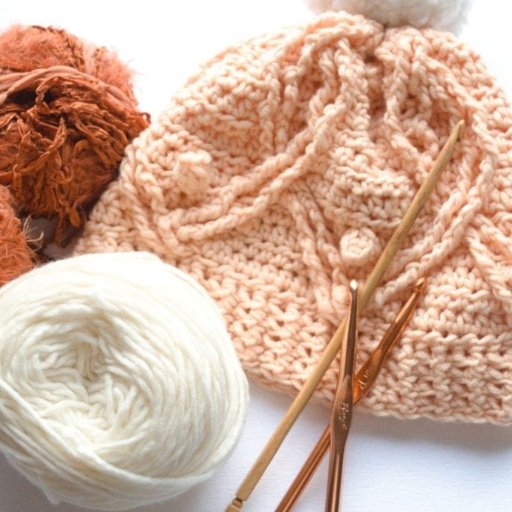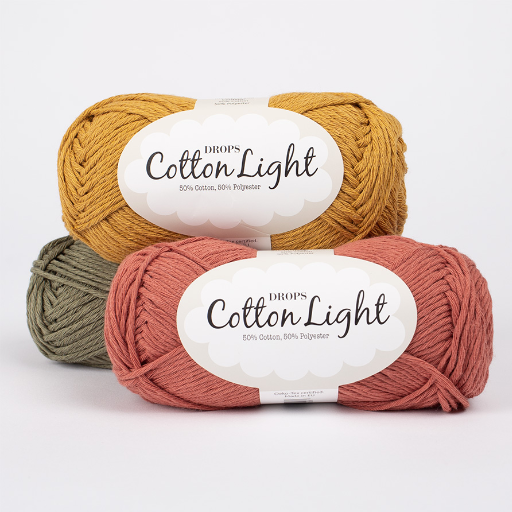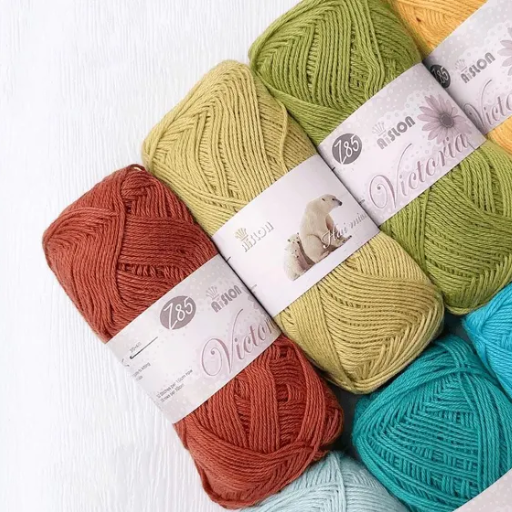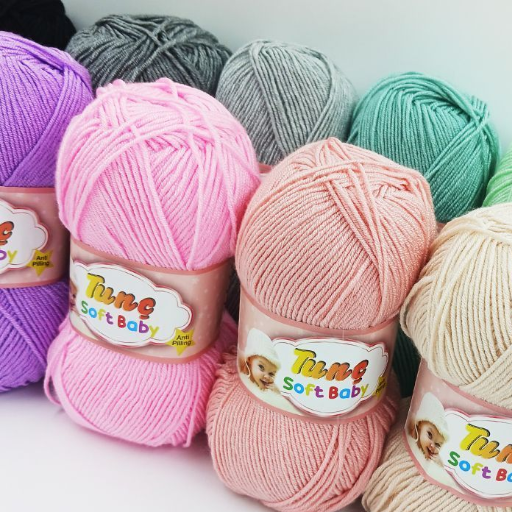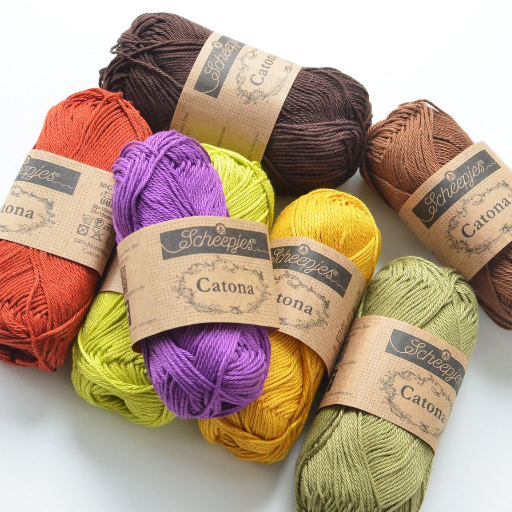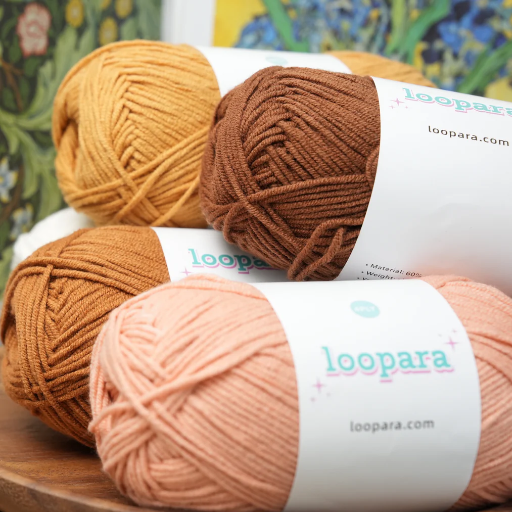Viscose yarn is one of the most widely employed textile materials. It is especially important to the fabric and apparel industry. The purpose of this article is to offer a detailed account of viscose yarn considering its production steps, major characteristics, and most widely practiced use. While explaining the technical details of viscose yarn, we will also discuss its environmental effects alongside sustainability issues and provide some perspective on what has been done and what still needs to be done within the industry. This guide will help you as a textile expert or an interested novice to make sense of the factors that render viscose yarn a central element of contemporary textiles. Accompany us as we elaborate the remarkable facts and features concerning this material.
What is Viscose Yarn?

Viscose yarn is a type of filament yarn spun from viscose, a type of semi-synthetic yarn made from natural materials, including wood pulp and cotton linters. It goes through steeping, pressing, aging, and spinning which transforms these raw materials into a semi-synthetic yarn. Because viscose resembles silk in its texture, is highly permeable, has vivid dyes, and is breathable, it is widely used for industrial, handicrafts, clothing, cutlery and for even home appliances. Its hybrid structure is the key contributor to the textile industry’s growing preference for viscose yarn, which combines the benefits of natural fibers with performance characteristics.
How is Viscose Yarn Made?
Production of viscose yarn starts with a cellulose component, which is usually sourced from wood pulps or cotton linters. Viscose yarn production is available for any manufacturer around the world, which makes it generally affordable. Cellulose is then treated with sodium hydroxide to make alkali cellulose, followed by shredding it into crumbs to optimize surface area. Once these crumbs are made, they undergo a set process, along with treatment involving the aging under controlled conditions. This step has to further undergo a treatment through Carbon disulfide which is then used to convert the material into Cellulose xanthate. The xanthate is then placed into diluted sodium hydroxide using a viscose solution, wherein it is extensively filtered, aerated, and extruded via rotary nozzles into a sulfuric acid coagulating vast. Toward the completion of this process, the xanthate will undergo a series of transformations, also referred to as Cellulose regenerates formation. Subsequently, after the yarn is washed, bleached, and dried, viscose yarn is ready
What are the Properties of Viscose Yarn?
Like every other textile, viscose yarn comes with its pros and cons. Viscose specifically contains unique properties such as higher absorbency and moisture retention in addition to powerful dye uptake. Along with possessing a soft, supple and resilient texture resembling cotton or silk, the yarn is highly versatile. The resulting yarn displays pink, blue or almost every eye catchy color with high fastness enabling it to hold vibrant and poster lasting colors. Regardless of its softness, viscose does have moderate strength and softness though it is weak when wet. For this reason, it is best during washing or processing it to handle it with great care. Viscose yarn also stands out since it is biodegradable, making it friendlier for the environment than other purely synthetic fibers. Despite this, the material can be very prone to wrinkling and shrinkage which should be taken into consideration for both care and application.
How Does Viscose Compare to Other Fibers?
While both cotton and viscose share a soft feel, the breathability and luster of silk is often more prevalent in viscose. Viscose does not withstand moisture well and cotton is more durable cotton than around moisture. Unlike polyester, which is more durable, wrinkle resistant, and easier to care for, the skin-friendly perspective of viscose due to natural breathability and moisture wicking makes it more comfortable than polyester. It is even more true when comparing viscose to silk. Viscose lacks the strength and durability silk offers, but with disregarding silk’s luxuriousness makes viscose a more affordable alternative. The fibers stand out for their distinct advantages with viscose lacking in strength and requiring careful handling draping above the rest for its aesthetic beauty.
What Are the Advantages of Using Viscose Yarn?

Viscose yarn is widely adopted in different fields because it has numerous benefits. Its main advantages are exceptional softness and smoothness similar to natural silk, giving a luxurious touch. Viscose allows airflow, which helps in the regulation of moisture, therefore it is comfortable for use in warm regions. Moreover, it absorbs dyes well, which ensures bright and durable colors in textiles. Because of the yarn’s flexibility, it can be mixed with other fibers, increasing the durability and effectiveness of garments. On the downside, viscose yarn, although attractive and affordable, is not so easy to maintain in the long run.
Is Viscose Yarn Environmentally Friendly?
Creating cellulose yarn from its wood-based sources, like pulp, raises reputational problems because of tissue sourcing issues related with habitat destruction, deforestation, and vivid emergent sapling woods. Proponents put forth an argument contending that the source of renewable cellulose is pulp wood. Controversies arises with regards to the impact of ecoremediation . Wood is damaged by wildfires and does not respond well on a plant level on planetary. On the other hand, closed-loop systems as a modern practice of sustainability aim to mitigate these chemicals and make the production of viscose greener. Consumers should look for the FSC or OEKO-TEX label for certification as these governed bodies confirm minimal environmental impact during acquisition and processing of yarn.
What Makes Viscose Fabric Comfortable?
Surgery cuts deep into a patient’s muscle, but viscose produced from wood pulp is very light compared to other types, making its texture silk-like. The fibers and wad have any particles or bean shaped objects separated by friction enabled them to release some moisture which helps maintain a dry sensation on the active parts of a human body. Because viscose dries up, it glides freely above a surface without hindering stretching motions. Because of these, knit fabrics and woven ones used to make a nonrestrictive and comfortable attire.
How Does Viscose Yarn Perform in Knitting?
Viscose yarn is particularly good for knitting because of the smooth texture, flexibility, and stitch definition. Its lightweight and breathable qualities also make it perfect for garments suited for warmer climates. Viscose also enhances the aesthetic value of the projects’ polish and high-end appeal through its natural shine, gleaming sheen. It is, however, important to mention that viscose yarn has limited elasticity. This inflexible nature makes it poorly suited for fitted knitted garments that require a great deal of stretch or recovery. Ensuring the best results when working with viscose yarn will require proper care like static tension and supportive patterns.
What are the Characteristics of Viscose Fabric?

Viscose drapes beautifully, hence the garments give off an elegant and flowing appearance. Absorbency and breathability of viscose fabric, means that it will be comfy to wear in different climates. It also has a smooth texture which adds to its comfort. Although, viscose feels soft, it is rather durable. Nonetheless, it is very prone to shrinking or wrinkling if not handled with care. It is hand or machine washable, however, it must be laundered on delicate cycles to prolong the life of the fabric. Due to being less elastic than other fabrics, it does lose recovery post being stretched and is prone to wrinkling, shrinking, and loss of resiliency over time.
Is Viscose Fabric Breathable?
As mentioned above, viscose is breathable which allows for it to be used in warm weather. Being semi-synthetic, made from wood pulp, means that it can absorb moisture which in turn helps reduce the build of sweat, hence why it helps contributes to comfort. Sustainability of breathability is coupled with the manner of production, looseness, weight, and weave of the fabric.
How Does Viscose Drape Compared to Other Textiles?
The semi-synthetic fabric flow and drape of viscose is profoundly acclaimed and is often compared to silk. It is practically weightless, allowing it to dance and conform to shapes effortlessly which makes it a go-to option for dresses and blouses. Viscose also has stiffer textures like cotton or linen when compared to other fabrics, but is still smooth and soft to touch which aids in it’s pliability. With all due respect, viscose’s drape is better than most synthetic textiles like polyester, as it combines drapability with a natural hand. It can, however, be altered by blend fiber content, stitching style, strata of fabric, and used stirpes, which will single-handedly change its character.
Is Viscose Biodegradable?
Indeed, Viscose is classified as biodegradable because its components include cellulose, which is a constituent of timber in the form of wood pulp. Under the right conditions, it can break down much faster than synthetic fibers like polyester. The process of making the fabric and any chemical treatments done to it will affect the biodegradability of viscose. Some products of viscose may have non-biodegradable added materials which affect corrosion, thus altering the product’s overall impact on nature.
How to Choose the Right Viscose Yarn for Your Projects?

When thinking about the right type of yarn to use for any project, these points need to be kept in mind for every project:
1. Intended Use: Does the yarn suit the kind of project being undertaken? Think if it’s for clothing, home textiles or simply for accessorizing. Each grade of yarn has its own level of softness, accompanying sheen alongside how durable they are.
2. Yarn Weight and Thickness: Yarn’s weight needs to be appropriate with the project’s design need. Fine yarns are suited for delicate work, while sturdier projects need medium to bulky versions.
3. Blends and Composition: Find out whether the yarn is pure viscose or made up of other fibers. A blended yarn is target may alter the texture, strength and even care needed for the material.
4. Color and Dye Stability: From a vantage point, tape primary concern colorfastness for ends likely to undergo repetitive washing. It is better to simply assume that the yarn will not fade.
5. Eco-Friendly Certifications: Choose blends with eco-certifications when sustainability is paramount as they guarantee responsible sourcing and production processes.
6. Care Instructions: Care needs to be taken when it comes to washing or drying an item in order to maintain the craftsmanship.
After taking all these considerations into account, the user is able to select a practical yarn and one that fulfills the aesthetic needs of the user’s design.
What Should You Consider When Purchasing Viscose Yarn?
When striving for optimal results on a given project, during the selection process of viscose yarn focus on the following factors:
1. Fiber Composition and Quality: Review the blend and grade of the viscose yarn to ensure it meets the specifications of your project. Viscose blends with cotton, linen or wool offer a range of softness and strength.
2. Eco-friendly Certifications: To promote sustainability gear projects towards yarns manufactured using eco-friendly methods such as those with OEKO-TEX® or FSC® certifications which endorse responsible production and ethical material sourcing.
3. Intended Use: Seek for yarn that has been produced with policies and practices aimed at reducing environmental impact to actively promote an eco-friendly agenda such as closed-loop manufacturing which recycles dangerous chemicals.
4. Production Process: Determine whether the yarn is made from materials that undergo spinning, dyeing, digital printing, finishing and sewing, then assembling and detailing the product into its final form. This comes after designing the product and is one of the last steps of the entire process.
5. Yarn Weight and Gauge: Set weight categories (lace, DK, bulky) and corresponding gauges based on the desired texture and density of the end product. Achieving this will ensure that the chosen patterns and instruments will work flawlessly along with them.
Taking these factors into consideration will enable you to eco-consciously purchase viscose yarn while still achieving the desired final product.
How to Care for Viscose Yarn?
Maintaining the shape, longevity, and functionality of viscose yarn requires proper maintenance checks, which include:
- Washing: For hand washing, a mild detergent mixed in with lukewarm water is recommended. Machine washing should only be done on a gentile cycle using a protective wash bag shield for the fiber. Harsh chemicals, including bleach, must be avoided at all costs.
- Drying: Visually inspect and leave the garment on a clean towel to dry. Do not slop wring or twist the item as these yarun fibers are very delicate and will most likely stretch or weaken when wet. Store away from direct lip, do not use tumble dryer.
- Ironing: To smooth out creases, steam and hovering at low “silk” or similar temp setting for visose works best. Make sure to use a lightweight cloth to guard the yarn from direct heat.
- Storage: Put away props in a space that isn’t hot or too humid and fold instead of hanging to avoid mishaps with weight over time causing the item to stretch.
Following all the steps guarantees that the yarn will meet the quality needed, the and enhance how good it looks alongside the life expectancy of the yarn.
What Types of Projects are Best for Viscose Yarn?
The soft, smooth finish and exceptional luster of viscose yarn makes it a perfect fit for light weight and easily wearable projects. This includes summer tops, dresses, scarves, and other garment accessories like shawls or wraps, all of which require fluid drape. Soft viscose’s absorbent ability also renders it useful for cozily decorative throws or puffer covers. For projects that require intricate patterns or bold elements, soft viscose’s color retention will enhance the appeal. However, it does not work with heavy-duty items since viscose stretches and loses its shape under strain.
Viscose Yarn vs. Polyester: Which is Better?

In comparing the use of a viscose yarn and polyester, their combination functionality is on both at the same time depending on the purpose set out. Viscose which is an industrially produced fiber comes from natural cellulose has more upper edge to breathability, softness, luxurious feel, and for moisture absorption along with coloring makes it an ideal candidate for garments and textiles that need to be comfortable and stunning at the same time. Viscose also boasts excellent moisture absorption and colors vibrancy. But on the other hand, viscose is not as durable, wrinkle resistant or shape retentive under stress.
Polyester is a common synthetic fiber noted for its strength, relatively low need for maintenance, and stretching or shrinking resistance. This easily makes it an ideal candidate for more robust use items, outdoor based need products, or any long wear and tear requirements. Unlike viscose it does pose the inability of soft and breathable fabric qualities formerly mentioned. At the end of the day, the choice must be made is whether is more suited comfort and visuals which would lean towards viscose, or lean towards the sturdy usefulness provided by polyester.
What are the Differences in Properties?
The differences between viscose and polyester are their making, physical qualities, and uses. Clothes made of viscose, which is a derivative of cellulose, is soft and lightweight. This means it is breathable which makes it comfortable to wear. Viscose is good for clothing that needs good draping and blousing. On the other hand, a synthetic polymer like polyester is durable as well as resistant to wrinkles and moisture which makes it better for use on outdoor garments and long-term resilient items. Unlike viscose which absorbs moisture but is less durable, polyester does not stretch or shrink and is resistant to moisture. However, they both lack a natural feel and the breathability. These reasons make viscose more preferable for comfortable fashionable garments whereas polyester is more suitable for use on activewear and other heavy-duty textiles.
Which Yarn is More Durable?
Comparing the durability of materials, polyester is evidently more durable than viscose. Unlike viscose, which is highly prone to tearing and damaging under wet conditions, polyester is much stronger, has better stretch and shrink resistance, and abrasion resistance. Thus, polyester is better suited for applications guarded with enduring use. It is also critical to note that viscose has its perks as well, particularly its softness and how comforting the material feels on the skin. That being said, it is clear that polyester comes out on top and will always be a better option for enduring use.
How Do They Compare in Environmental Impact?
Because of differing processing techniques and material characteristics, both polyester and viscose have unique environmental impacts. The fossil fuel extraction and the subsequent greenhouse gas emissions during production of polyester, which is petrochemical based, has a notable environmental impact. Further, the polyester’s resistance to biodegradability adds to enduring waste problems, worsening the both microplastic pollution crisis on Earth.
While the potential for reducing the negative impact comes with advancements in closed-loop production, both materials raise major concerns when it comes to sustainability. While viscose offers more biodegradable material, its resource-intensive production makes it harmful. As for polyester, its vast possibilities make it useful, but the long-term microplastic waste adds pollution and wasted space.
References
Frequently Asked Questions (FAQ)
Q: What is viscose yarn and how is it made?
A: Viscose yarn is a type of fiber made from regenerated cellulose, primarily derived from wood pulp or bamboo. The manufacturing process involves dissolving cellulose in a chemical solution, extruding it to form fibers, and then spinning these fibers into yarn.
Q: What is the difference between viscose and rayon?
A: Viscose is a type of rayon, specifically the most common form of regenerated cellulose fiber. While all viscose is rayon, not all rayon is viscose. Other types of rayon include modal and lyocell, which have different properties and manufacturing processes.
Q: Are there any advantages of using viscose material in textiles?
A: Yes, the advantages of viscose include its softness, breathability, and drape. Viscose is biodegradable, making it an eco-friendlier option compared to synthetic fibers made from petroleum. It also has a luxurious feel and can mimic the appearance of silk.
Q: What is the relationship between viscose and polyester?
A: Viscose and polyester are different types of fibers. Viscose is a natural, biodegradable fiber made from regenerated cellulose, while polyester is a synthetic fiber made from petroleum. Fabrics that combine viscose and polyester can offer the softness of viscose while enhancing durability and wrinkle resistance.
Q: What should I look for when choosing viscose yarn?
A: When choosing viscose yarn, look for high-quality viscose yarn that has a smooth texture and a good yarn label indicating its fiber content. Consider the intended use, as some viscose blends may offer additional properties like stretch or durability.
Q: Is viscose yarn suitable for all types of garments?
A: Yes, viscose yarn is versatile and can be used for a variety of garments, including dresses, blouses, and scarves. However, it’s important to note that garments made from viscose may require special care when washing to maintain their quality.
Q: Can viscose be made from bamboo?
A: Yes, bamboo viscose is a popular type of viscose yarn made from bamboo pulp. It shares similar properties with traditional viscose, such as softness and breathability, and is often marketed as an eco-friendly alternative.
Q: How does viscose yarn behave when washed?
A: Viscose yarn can shrink or lose shape if not washed properly. It is recommended to hand wash or use a gentle cycle with cold water and to air dry to maintain the integrity of the fibers.








